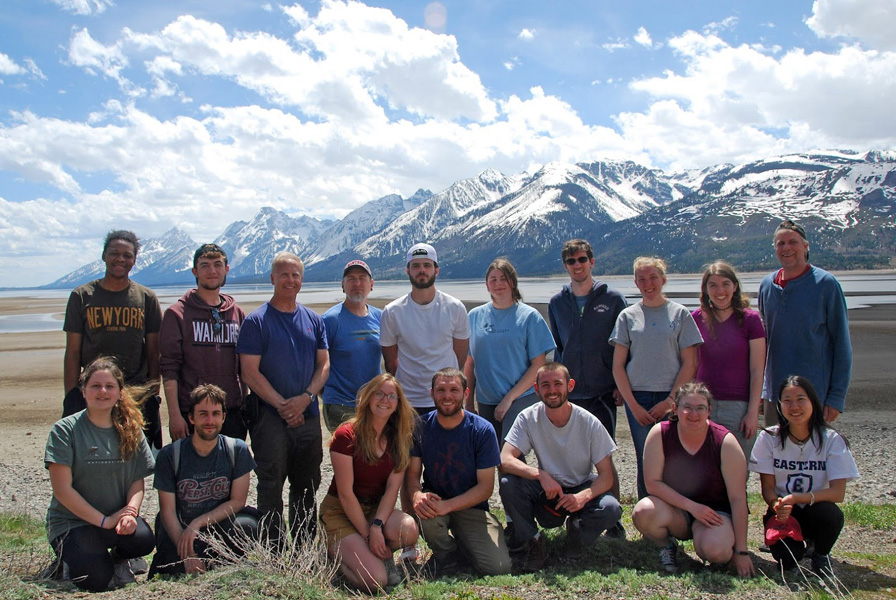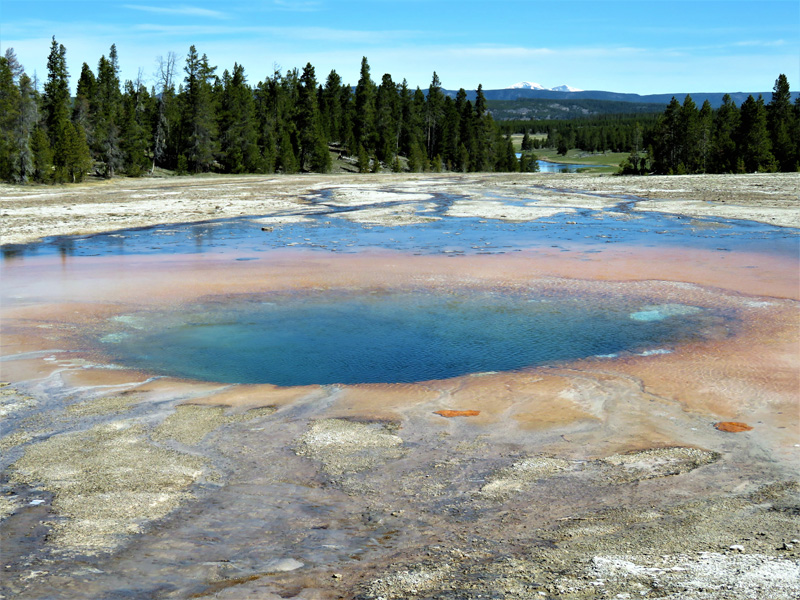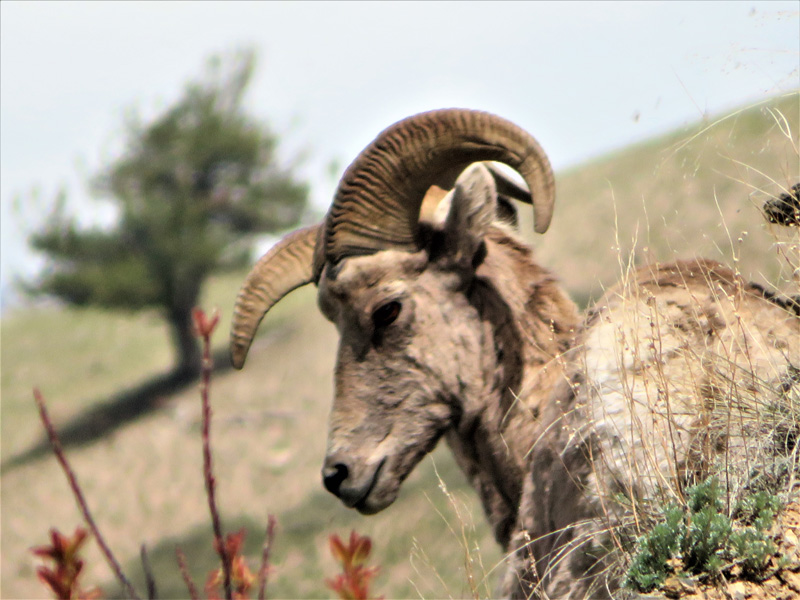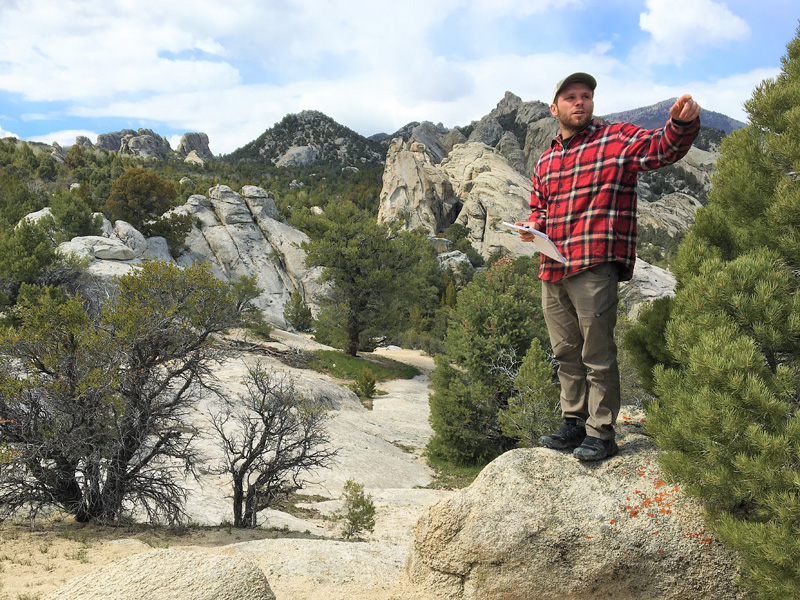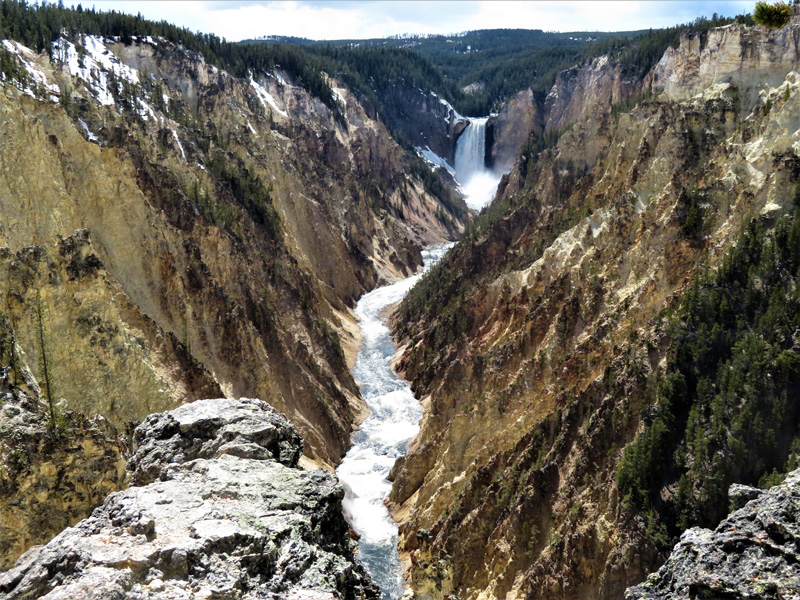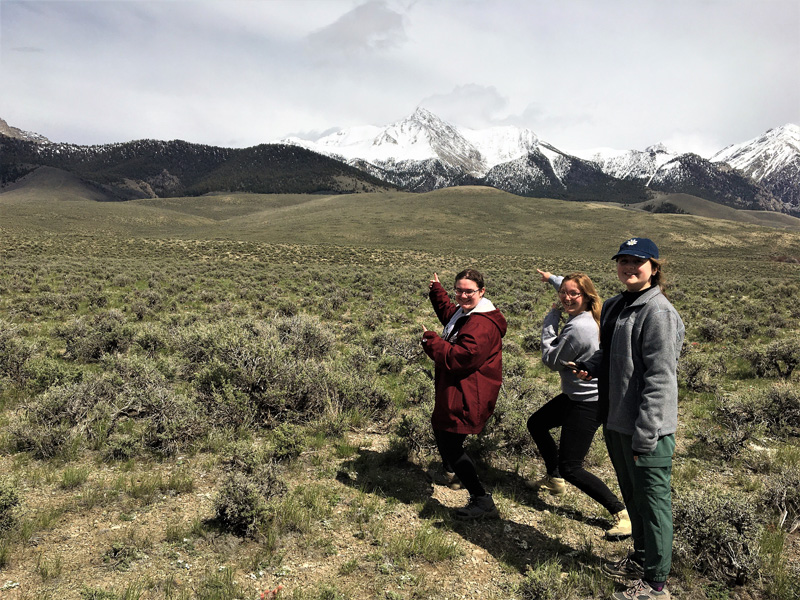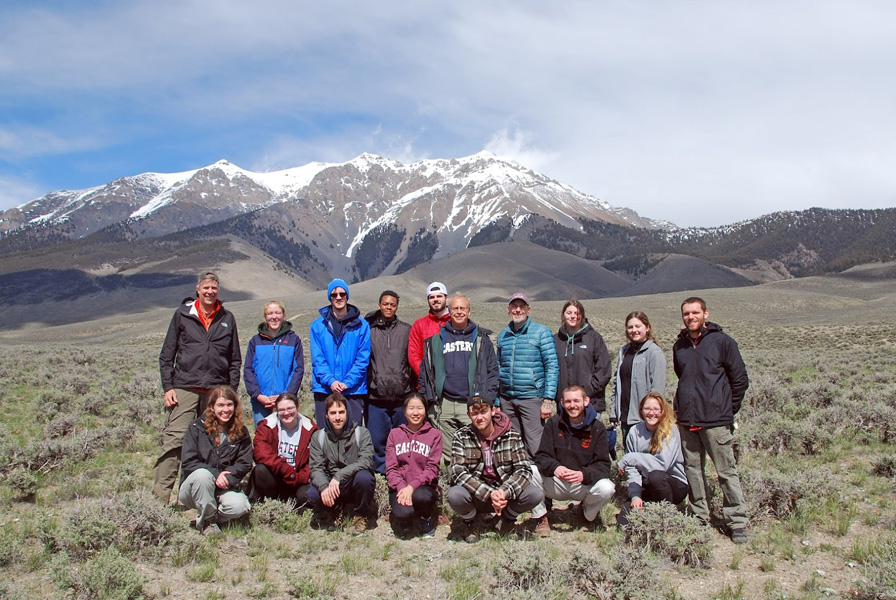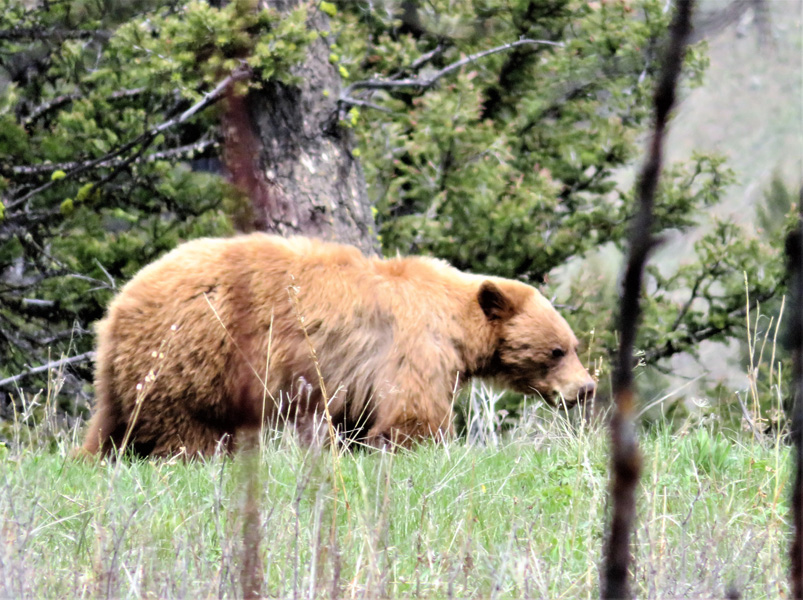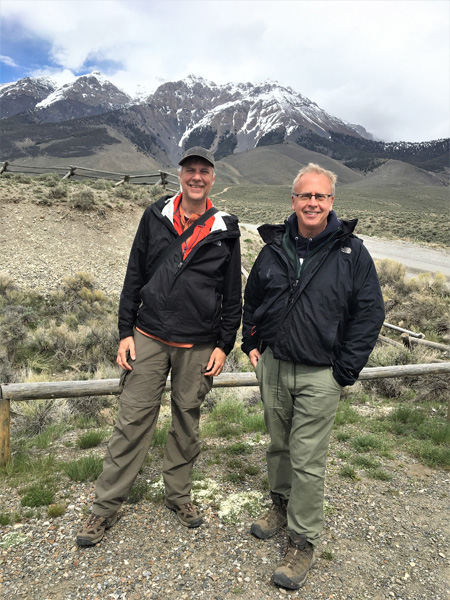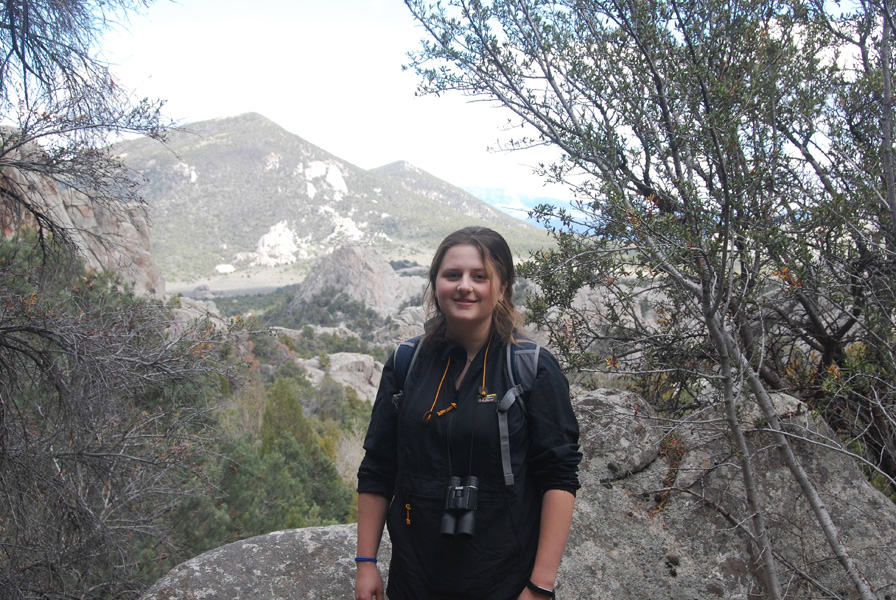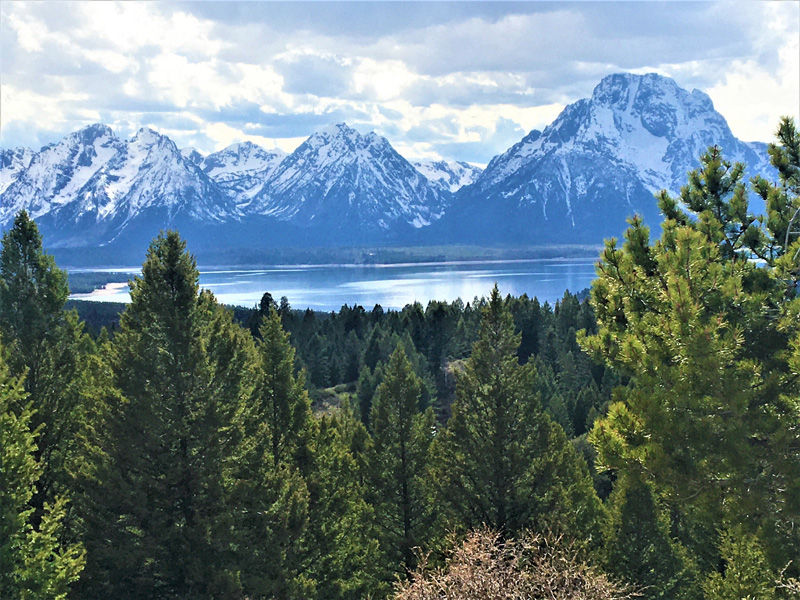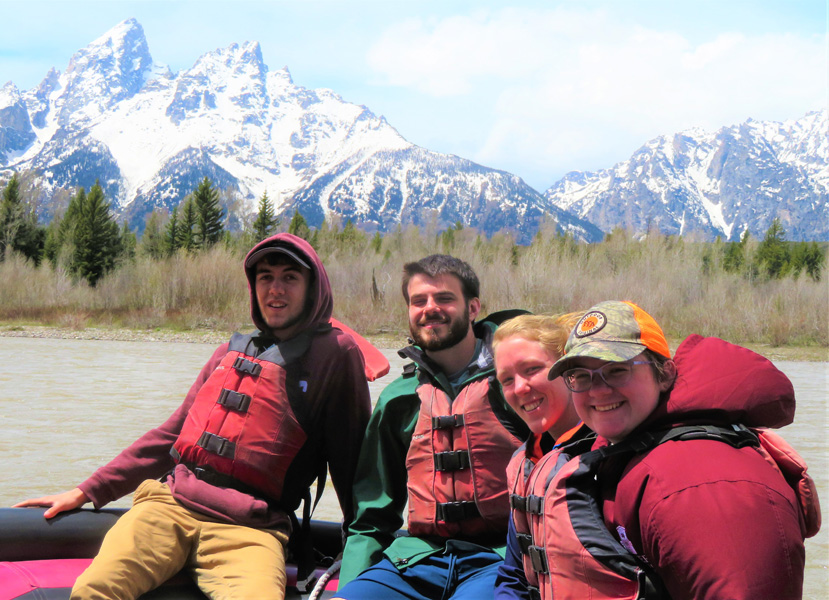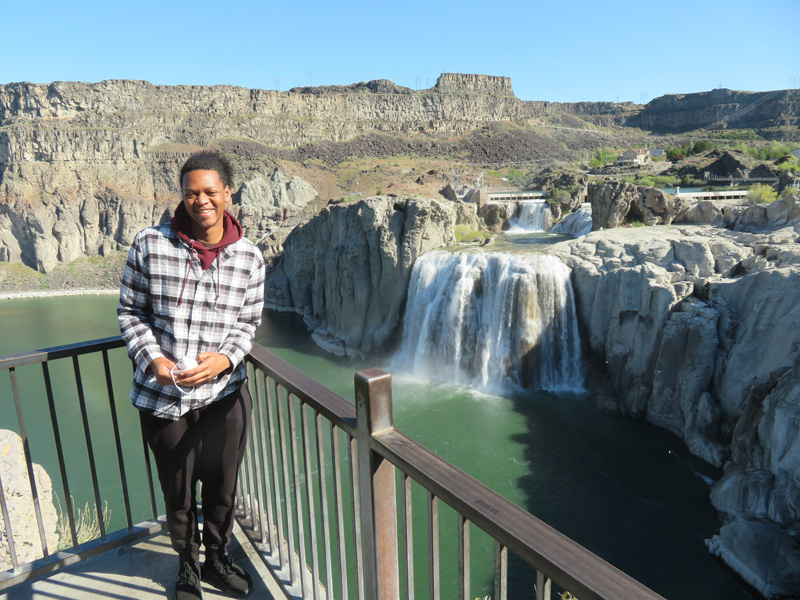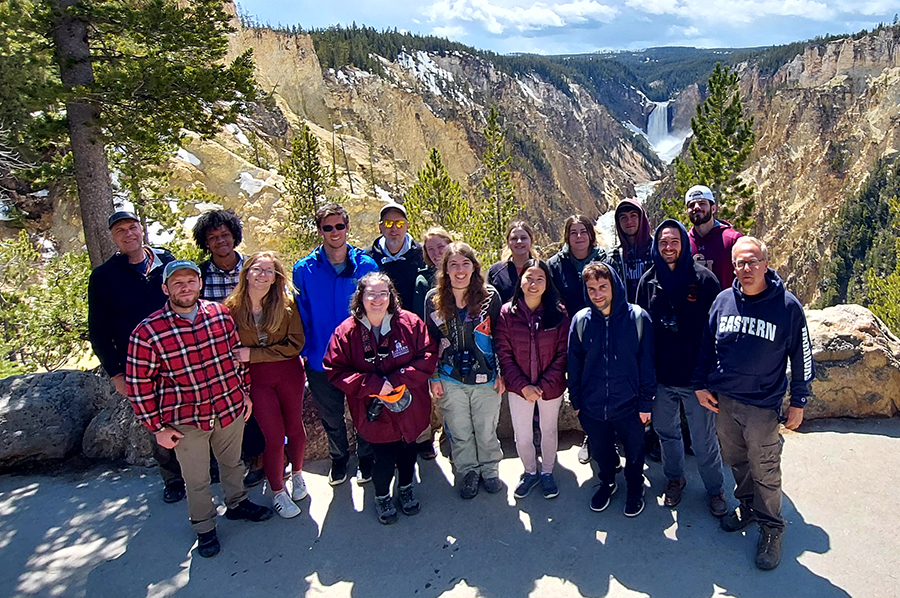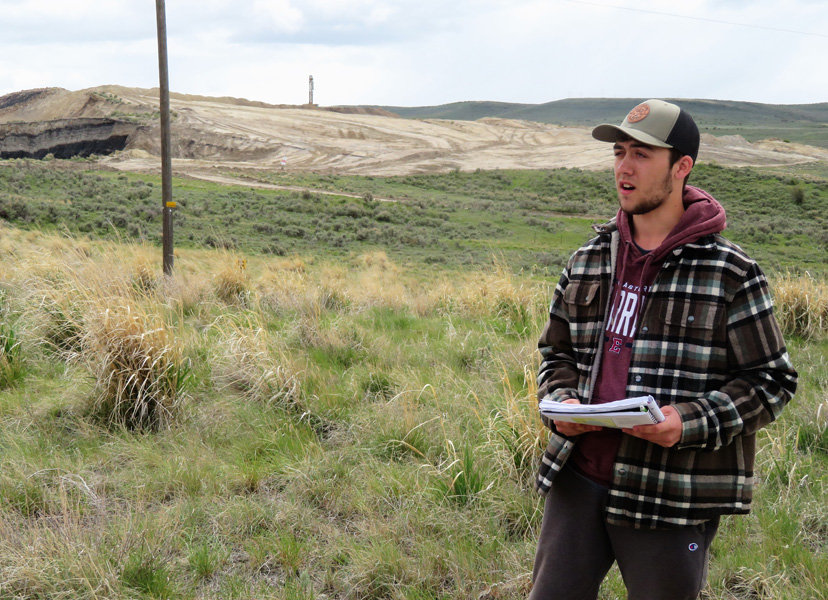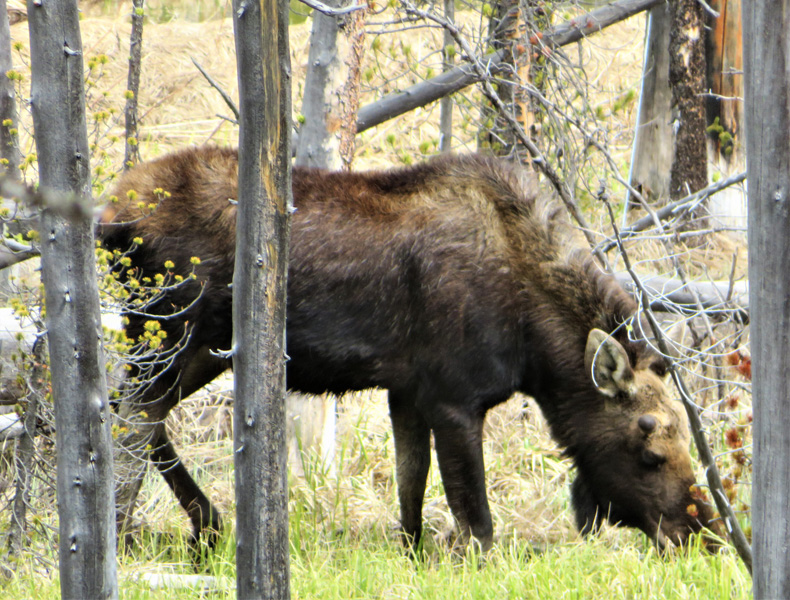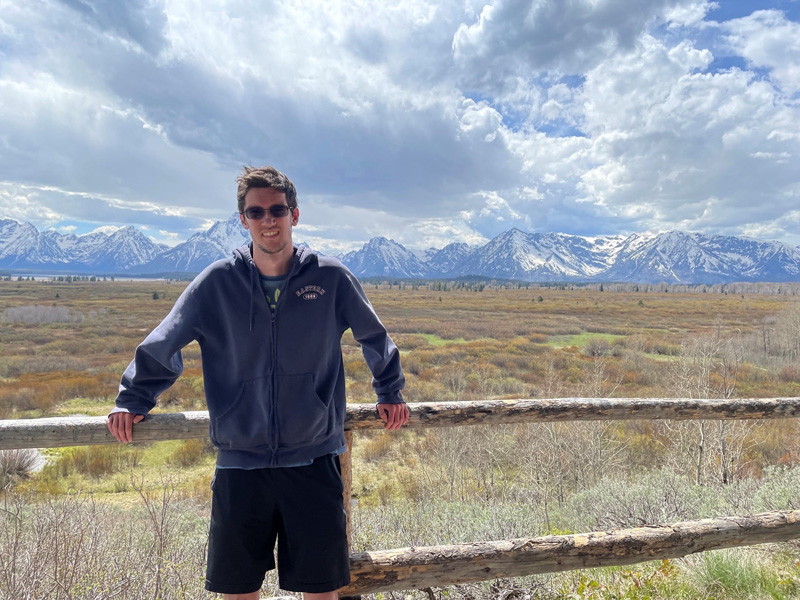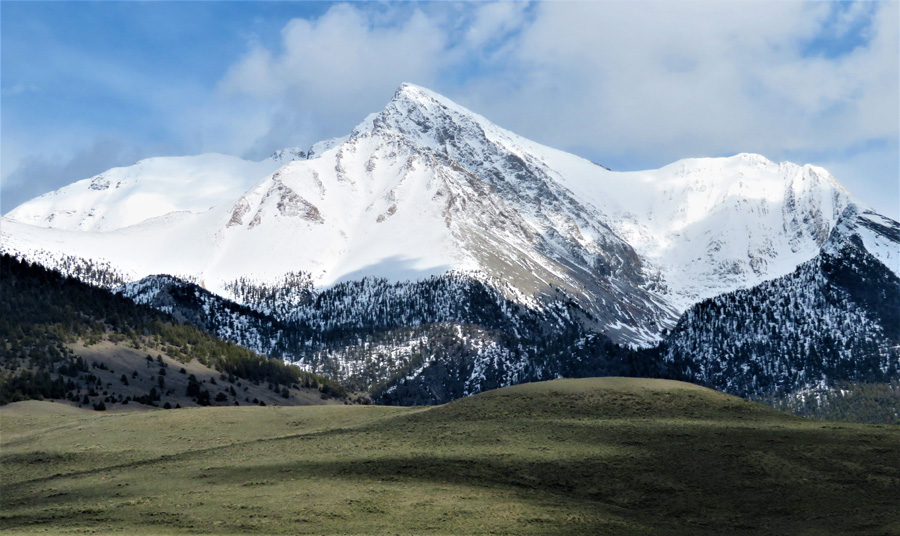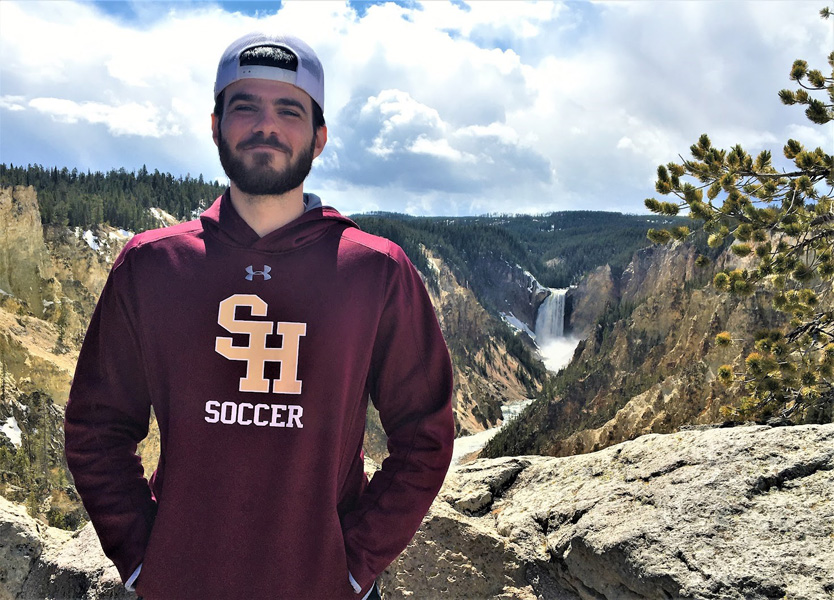- Apply
- Visit
- Request Info
- Give
Field course brings intrepid EES students out West
Written by Michael Rouleau
Published on June 21, 2022
A cadre of Environmental Earth Science (EES) students set out on a 12-day expedition this May exploring some of the United States’ great mountain landscapes. Led by Professors Dickson Cunningham and Peter Drzewiecki, 15 EES students embarked on a clockwise route out of Salt Lake City, visiting such geological wonders as Craters of the Moon National Monument, Yellowstone National Park and Grand Teton National Park.
The adventurous “global field course” toured numerous natural wonders over a nearly 1,000-mile route with the intention of exposing the students first-hand to geological concepts they studied throughout the year on campus.
“For me as a faculty member, this is teaching at its best,” said Drzewiecki. “Standing in front of a mountain range that rises abruptly from the plains, placing your hand on a fault scarp from a magnitude 6.9 earthquake, collecting fish fossils from an ancient lake that existed 50 million years ago, standing on the rubble of a landslide that claimed 19 lives, and scaling multiple volcanoes brings the science to life in a way that can’t be replicated in the classroom.”
Highlights included mountainous hikes, thunderous waterfalls, a rafting trip downstream the Snake River and wildlife sightings of grizzly bears, moose, elk, bighorn sheep and more. “This trip stood out because of the great diversity and abundance of wildlife we saw,” said Cunningham, who has led several field courses out West. “We also had snow on 5 of 13 days and drove and hiked through blizzards. The geology and scenery were spectacular, as always.”
In addition to several side trips and pitstops, the excursion included extended stays in Yellowstone and Grand Teton National Parks. “In Yellowstone we were enthralled by the geothermal sights, rich scenery, diverse landscapes, amazing wildlife and the sheer vastness of the park,” said Cunningham. “Old Faithful performed on cue and the mud pots burped and blipped as expected. We left Yellowstone satisfied that we had observed Earth’s largest concentration of volcanic and hydrothermal indigestion.”
Visiting the Borah Peak Earthquake zone was particularly impactful for sophomore EES major Emma Bean, who is interested in studying volcanology. “Going to the town it impacted and visiting the actual fault zone was really cool,” she said. Speaking to the trip overall, she added, “The geology is so different than it is here in Connecticut; we saw so many sights I had only heard about in textbooks, and of course seeing it in person makes it that much more memorable.”
Each student was required to present on a topic related to one of the trip’s destinations. “We studied the region prior to the trip,” said junior EES major Aiden Gamache, who presented on coal formation and the coal industry near an active coal mine in Wyoming. “(Presenting) added to the learning experience because it was right there as we talked about it.”
Senior EES major Alex Karalus presented on the geothermal potential of the Snake River Plain. “This topic really connected to my career interests,” said Karalus, who concentrated in Sustainable Energy Science. “This trip not only got me out West, but it got me on an airplane—two things I had never done before.”
For all in attendance, the shared experience of camaraderie made the trip unforgettable. “I developed such a special bond with the group of students and professors who attended the trip, making memories and discovering a new part of the world to almost all of us,” said senior EES major William Petrucci.
“This is a trip that resonates within you… Learning things in the classroom is one thing, but to physically visualize a 75-million-year-old mountain building event captivates the mind in a brilliant way… the natural blossoming of life and the Earth on display is breathtaking.”



